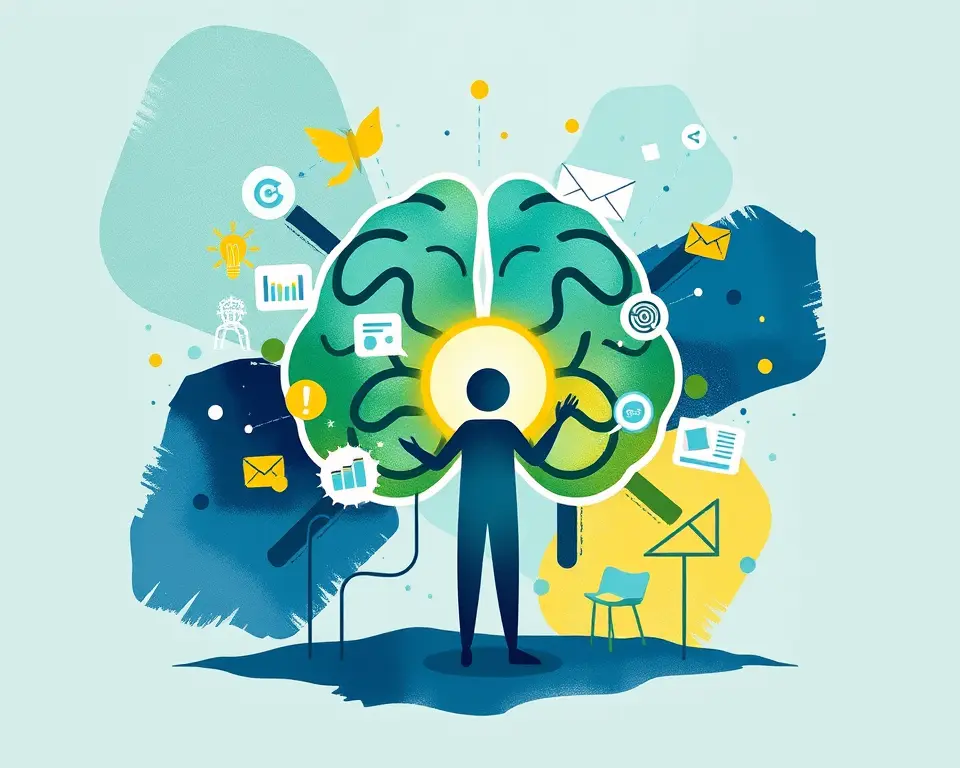The modern workplace is increasingly recognizing the importance of employee mental health. As stress, burnout, and other mental health challenges become more prevalent, companies are seeking innovative ways to support their workforce. One promising avenue is the use of self-guided online tools, which offer a discreet, accessible, and cost-effective way to provide mental health support. This article explores the reasons why self-guided online tools may represent the future of workplace mental health support, examining their benefits, challenges, and potential impact on employee well-being.
The Growing Need for Workplace Mental Health Support
In today’s fast-paced and demanding work environments, mental health issues are on the rise. Employees face numerous stressors, including long hours, heavy workloads, job insecurity, and work-life imbalance. These factors can contribute to a range of mental health problems, such as anxiety, depression, burnout, and stress-related illnesses.
Several factors contribute to the increasing need for mental health support in the workplace:
- Increased Awareness: There’s a growing recognition that mental health is just as important as physical health. Employees are more aware of mental health issues and are taking steps to protect their well-being.
- Rising Stress Levels: Work-related stress is a significant concern. The always-on, hyper-connected nature of the modern workplace can lead to chronic stress and burnout.
- Impact on Productivity: Poor mental health can have a significant impact on productivity, absenteeism, and overall job satisfaction.
- Evolving Employee Expectations: Employees are increasingly looking for workplaces that support their mental health. Companies that prioritize employee well-being are more likely to attract and retain top talent.
The Promise of Self-Guided Online Tools
Self-guided online tools offer a potential solution to the growing need for workplace mental health support. These tools provide employees with access to mental health resources and interventions that they can use independently, at their own pace, and in a confidential manner.
Benefits of Self-Guided Online Tools
Self-guided online tools offer several key benefits for both employees and employers:
Accessibility and Convenience:
- 24/7 Availability: These tools are available online and can be accessed anytime, anywhere, providing employees with support whenever they need it.
- Flexibility: Employees can engage with the content and coaching at their own pace, fitting it into their schedules and lifestyles.
- Remote Access: Employees can access these tools from their smartphones, computers, or tablets, making it easy to use them at work, at home, or on the go.
Cost-Effectiveness:
- Scalability: Traditional employee mental health programs, which often rely on therapist-centered models, can be prohibitively expensive and difficult to scale. Self-guided online tools offer a more cost-effective solution, allowing companies to provide mental health support to a large number of employees without incurring significant costs.
Breaking the Stigma Cycle:
- Anonymity: Digital self-help tools offer a discreet and accessible way for employees to address mental health challenges. Individuals can engage anonymously, reducing the stigma associated with seeking help.
- Privacy: Because these tools are available online and can be used anonymously, they offer an added layer of privacy and comfort.
Rapid and Measurable Results:
- Evidence-Based Programs: Many self-guided online tools are based on evidence-based therapies, such as cognitive behavioral therapy (CBT), and have been shown to be effective in treating common mental health problems.
- Personalization: Unlike the traditional one-size-fits-all model, some SSDIs are personalized and can adapt content based on individual responses and needs. For instance, an employee struggling with insomnia might receive cognitive-behavioral techniques specifically aimed at improving sleep, while a manager experiencing burnout could access modules for building resilience and managing work stress.
- Progress Tracking: These tools often include features that allow employees to track their progress and monitor their mental health over time, providing valuable insights and motivation.
Complement to Traditional Therapy:
- Integrated Approach: Self-guided online tools can complement and integrate with traditional therapy, providing employees with an accessible and immediate resource to help them cope with stress and build resilience.
- Triage and Support: Some tools can act as triage by helping to identify employees who need more personalized care but might otherwise go untreated. Other digital tools can augment treatment already being provided at a relatively low cost.
Types of Self-Guided Online Tools
A variety of self-guided online tools are available to support employee mental health:
Smartphone Apps: Mobile apps offer a practical and user-friendly way to manage mental health, seamlessly integrating into employees’ daily routines. Examples include:
- Headspace: Learn mindfulness and meditation skills and use guided meditations to help you manage stress and anxiety to help improve sleep, focus, and mind-body health.
- Calm: Meditation practices and sleep stories written and recorded by various individuals to help with sleep, meditation, and relaxation.
- Happify: Science-based games and activities that aim to help you overcome stress, negative thoughts, and life’s general challenges.
- Sanvello: Offers therapies for stress, anxiety, and depression.
- MindDoc: Personalized mental health support through psychological assessments, tips, exercises, and daily insights.
Online Modules and Workbooks: These resources provide structured programs on specific mental health topics, helping employees learn, practice, and build resilience. Examples include:
- CCI (Centre for Clinical Interventions): Offers modules on coping with depression, panic, anxiety, health anxiety, social anxiety, and more.
- moodgym: Interactive skills training for depression and anxiety.
Virtual Communities: Online communities and peer support groups provide a space to share experiences, offer advice, or simply listen to others’ stories. Platforms include 7 Cups and TalkLife.
Digital Cognitive Behavioral Therapy (iCBT): iCBT is a virtual, self-guided, practical, structured, short-term form of CBT. This clinically-proven method uses mental exercises that challenge unhelpful beliefs and, in turn, teach effective behaviors for dealing with anxiety, depression, or other emotional or mental health challenges.
Self-Help Education Programs: Mental health education programs offer self-guided, structured programs on specific mental health topics that help members learn, practice, and build resilience. By using engaging, evidence-based, audio/video content and practice exercises presented by a therapist instructor, employees can master new mental health skills.
AI-Driven Chatbots: AI-driven chatbots provide CBT-based interactions and other therapeutic techniques which may help manage mental health problems.
Blogs, Vlogs, and Podcasts: These resources offer a wealth of mental health-related content, covering a wide range of topics through advice, personal narratives, and research discussions.
Challenges and Considerations
While self-guided online tools offer numerous benefits, there are also challenges and considerations to keep in mind:
Effectiveness:
- Guided vs. Self-Guided: Self-guided interventions, on average, may not show the same degree of effectiveness as traditional guided individual or group therapies.
- Small to Medium Effects: Self-guided interventions generally show small to medium effects compared to control groups.
Engagement and Adherence:
- Low Adherence Rates: Low adherence rates to self-guided programs have been observed. This may be due to generic and unappealing programs that do not address the particular needs of individuals.
- Lack of External Guidance: The lack of external guidance could contribute to higher attrition rates.
Choice of App:
- Confusing Array of Options: Potential users may face challenges in deciding which program to use, given the confusing array of options available.
- Need for User Guides: There is a need for user guides that can help individuals choose the right self-help tool based on their specific needs and circumstances.
Limited Scope for Contextualization:
- Co-occurring Difficulties: It can be challenging to implement a self-help intervention in the context of co-occurring difficulties.
- Multiple Problems: Most clients will have multiple problems, and guides may not be intimately familiar with treatment protocols for every single mental health disorder.
Motivation Management:
- Maintaining Motivation: Users may struggle to stay motivated and engaged with self-guided programs over time.
- Gamification: Incorporating gamified elements, such as rewards and goals, can encourage regularity and persistence in users.
Stepping Up to Higher Intensity Interventions:
- Awareness of Limitations: Unguided self-help interventions should make users aware of the limitations of self-care.
- Monitoring Severity: Programs need to build in elements that teach users to monitor indicators of severity over time and make appropriate choices to shift from self-care to other higher intensity interventions.
Implementation Barriers:
- Lack of Interest: Small and medium-sized enterprises (SMEs) may face barriers such as lack of interest, lack of support by management, and concerns about privacy.
- High Workload: High workloads and understaffing can also hinder the implementation of workplace mental health interventions.
Stigma and Discrimination:
- Specific Challenges: Workplace mental health interventions may face specific challenges due to stigma and discrimination attached to mental health.
- Creating a Safe Culture: Creating a business where speaking up about mental health issues is not only accepted but actively celebrated is key to looking after your team and building a psychologically safe workplace.
Best Practices for Employers
To maximize the benefits of self-guided online tools and address the challenges, employers should consider the following best practices:
Assess Employee Needs:
- Conduct a Mental Health Needs Assessment: Understand the specific challenges and needs of employees.
- Tailor Programs: Customize content to meet employee requirements.
Choose Evidence-Based Programs:
- Select Proven Tools: Ensure that the selected tools are grounded in scientific evidence.
- Prioritize CBT-Based Tools: Given that online tools offering CBT resources may help individuals identify and alter harmful thought patterns.
Promote Accessibility and Awareness:
- Ensure Wide Accessibility: Ensure that the program will be easily and widely accessible.
- Communicate Benefits: Highlight the program’s benefits to staff.
- Offer One-on-One Coaching: Offer one-on-one clinician coaching, if desired.
Encourage Engagement and Motivation:
- Offer Incentives: Provide incentives for participation.
- Incorporate Gamification: Adding gamified elements, such as rewards and goals, can encourage regularity and persistence in users.
- Promote Self-Care Strategies: To make sure the pillars of well-being, like social, physical, emotional and financial aspects are covered it is important to consider an extensive library of options
Integrate with Existing Resources:
- Complement Existing Programs: Complement an existing therapeutic relationship.
- Provide Access to Therapy: Make access to therapy readily accessible.
Address Stigma and Promote a Supportive Culture:
- Open Conversations: Start talks about mental health with colleagues and coworkers. The more talk happens, the more mental health is normalized.
- Seek Supportive Employers: Look for employers who value mental well-being as much as employees’ skill sets.
Provide Training and Support:
- Provide Mental Health Training: Providing mental health training for managers, and wellness initiatives to support mental health.
- Recognize Limitations of Self-Care: Self-care strategies, particularly, unguided self-help approaches can be considered low-intensity interventions and users should be made aware of such.
The Future of Workplace Mental Health
The future of workplace mental health support is likely to involve a combination of traditional approaches and innovative technologies. Self-guided online tools are poised to play a significant role in this evolving landscape, offering a scalable, accessible, and cost-effective way to support employee well-being.
By embracing these tools and implementing best practices, employers can create a workplace culture that prioritizes mental health, reduces stigma, and empowers employees to take control of their well-being. As research continues to demonstrate the effectiveness of self-guided online interventions, their role in workplace mental health support will only continue to grow.










